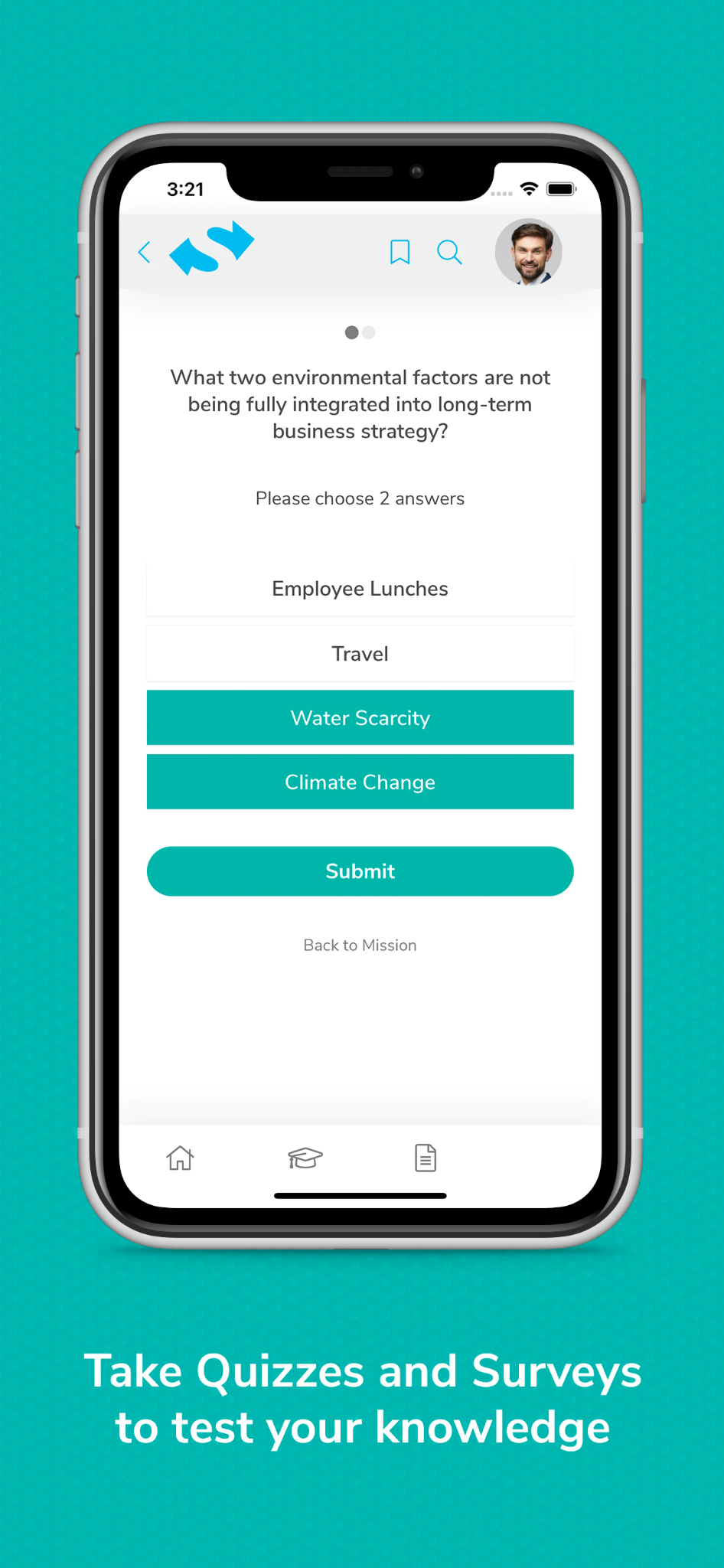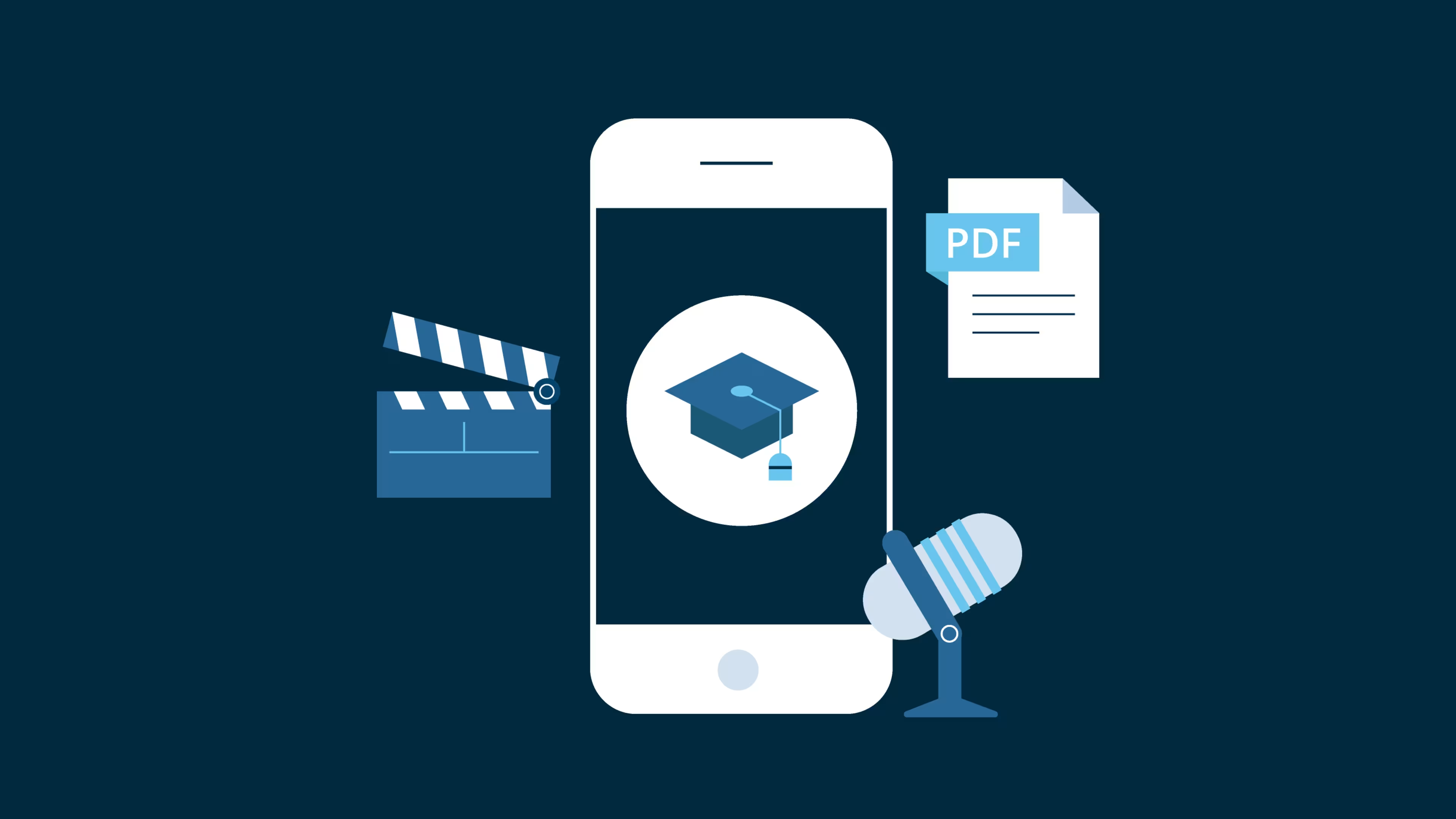The future of employee training is microlearning. Prepare to upgrade your organization’s learning strategy with this guide, which includes examples of microlearning at work from three professionals.
Whether it’s a necessary compliance course or a targeted upskilling initiative, it feels like there's always some sort of training on the horizon that HR leaders need to plan for—especially for those in charge of learning and development programs.
With so many priorities for HR professionals to juggle, we understand the need for a low-effort option when it comes to creating and administering training initiatives. And while we wouldn’t judge you for outsourcing this task, there is another approach you should know about: microlearning.
Microlearning is a training strategy that delivers only the necessary information at the exact right time. It’s low-cost, easy to produce, and takes less time for employees to complete than traditional training, which makes it a great option for HR leaders with little time to dedicate to developing formal learning plans, as well as small businesses with a tight training budget.
If your interest is piqued, keep scrolling to learn more about this strategy and hear from three professionals who are benefitting from using microlearning as a training tool at their workplace.
What is microlearning?
Microlearning is a term used in eLearning to describe “bite-sized” learning modules. Usually applied in a corporate setting, microlearning-based training is quick, focused training sessions that are completed at the learner’s convenience.
Microlearning content can take many forms, from short blog posts to full-blown, gamified multimedia. Here are some of the most common forms of microlearning content:
Reading material such as blogs or case studies
Games, tests, or quizzes
Podcasts or audio recordings
Infographics and other visuals
Short videos or presentations
Microlearning software is a tool used for corporate training that provides employees with short bursts of targeted eLearning content that can be consumed quickly and easily, often on a mobile device.

A knowledge check in StoryShare Learn, a microlearning platform (Source)
What are the benefits of microlearning?
There are a number of reasons why organizations opt for microlearning as a training strategy. Here are the top three benefits of microlearning:
It’s more affordable than long-form training
It increases learner engagement and retention
Research shows that the human attention span is getting shorter and shorter. Microlearning content takes no more than five to 10 minutes to complete, so learners don’t have much time to get distracted. And because microlearning modules focus on delivering key takeaways without overloading the learner, retention is better as well. Learners can also revisit the microlearning course at any time to refresh their understanding of the concept.
It closes skill gaps faster
You’ll often see microlearning associated with the phrase “just-in-time” training. This is because microlearning is often used to impart new knowledge or skills on an employee right when they need it, rather than ahead of time. For example, if your team is completing a task that only occurs once a year, you can share a video or process document that walks them through the steps they have to take before they begin the task.
3 microlearning examples from real professionals
Many businesses are already successfully using microlearning as a training strategy. Below, we’ll hear from three professionals on how their microlearning strategy looks in practice.
1. Avoid information overload when onboarding new hires
We spoke with Alina Clark, co-founder and marketing manager of CocoDoc, a PDF editing tool, about how her team started using microlearning for onboarding after pivoting to remote working last year. CocoDoc’s new hires were offered bite-sized online modules they could complete on their own time, rather than the typical one-on-one formal training sessions that impede a new hire’s first few weeks on the job.
Clark shared that employee productivity shored up within two weeks of the initial onboarding process, in spite of the fact that most employees were dealing with new software tools.
Using microlearning as a training tool means that we don't have to interrupt our work process in order to train employees—that's a huge advantage.


Alina Clark
co-founder and marketing manager at CocoDoc
How to make this strategy work for your business:
Run through your company's onboarding checklist and identify any training sessions that aren't time-sensitive or particularly interactive. Then, meet with employees who are involved with those sessions to discuss whether they can be turned into microlearning content. This can help you get buy-in across the team for investing in and using time-saving microlearning tools.
2. Implement self-service HR training sessions
Melanie Hanson, CEO of EducationData Loan Finance, says that their HR team uses microlearning for a variety of training initiatives. For example, they develop short videos that employees can access at any time to educate themselves on different topics, such as how to use their payroll software, the appropriate process for scheduling meetings, and even some aspects of diversity and inclusion training.
We find that employees respond much better to a short video every now and then instead of hours or days of focused training.


Melanie Hanson
CEO of EducationData Loan Finance
They also pair these videos with short quizzes created via Google forms that act as a knowledge check.
How to make this strategy work for your business:
Identify questions your HR team fields over and over again, such as how to access self-service portals or submit an employee referral. Work with your team to create evergreen training resources, such as how-to documents or short videos, then publish your microlearning content on your company intranet.
3. Keep compliance training top-of-mind with scenario-based videos
We asked David Reid, the sales director at VEM Tooling, how microlearning is applied within the VEM Group, a global tooling and injection molding company. As sales director, one of Reid’s responsibilities is to provide employees with environment, health and safety (EHS) training.
Instead of a lengthy compliance course that employees may have a hard time retaining protocols from, Reid’s team opts for a video that uses high-impact, contextual imagery to recap the fundamental aspects of an EHS compliance course.
This approach to compliance training effectively achieves the outcome Reid is looking for: reinforcing the requirement for constant risk assessment of hazards during the plastic manufacturing process.
Mainly, our training videos use scenarios to help learners recognize potential danger and prompt the right action through feedback.


David Reid
sales director at VEM Tooling
How to make this strategy work for your business:
Even if your business operations don’t involve dangerous factory floors, there’s likely still some form of compliance training that employees must complete, such as anti-harassment sessions. Look for opportunities to deliver training information in the form of scenarios and provide knowledge checks that reinforce the appropriate responses in those scenarios.
Capterra Tools and Tips
Hopefully these examples inspire you to start using microlearning as a training strategy at your organization. Before you go, check out these related resources so you can get started on improving the training strategy at your business.
Learning management systems (LMS): Businesses use these tools to develop and administer employee training programs. Check out our 2021 Shortlist for a list of the top LMS on the market.
Microlearning software: These platforms share many features with LMS, but have an added focus on creating shorter, to-the-point training content that’s optimized for mobile devices.
Lastly, there’s always more to prepare for as an HR leader. Get up to speed by reading "3 Surefire Predictions for the Future of Talent Management", which details the trends we’re seeing in HR, backed by research and paired with recommendations for how to take advantage of them at your workplace.

